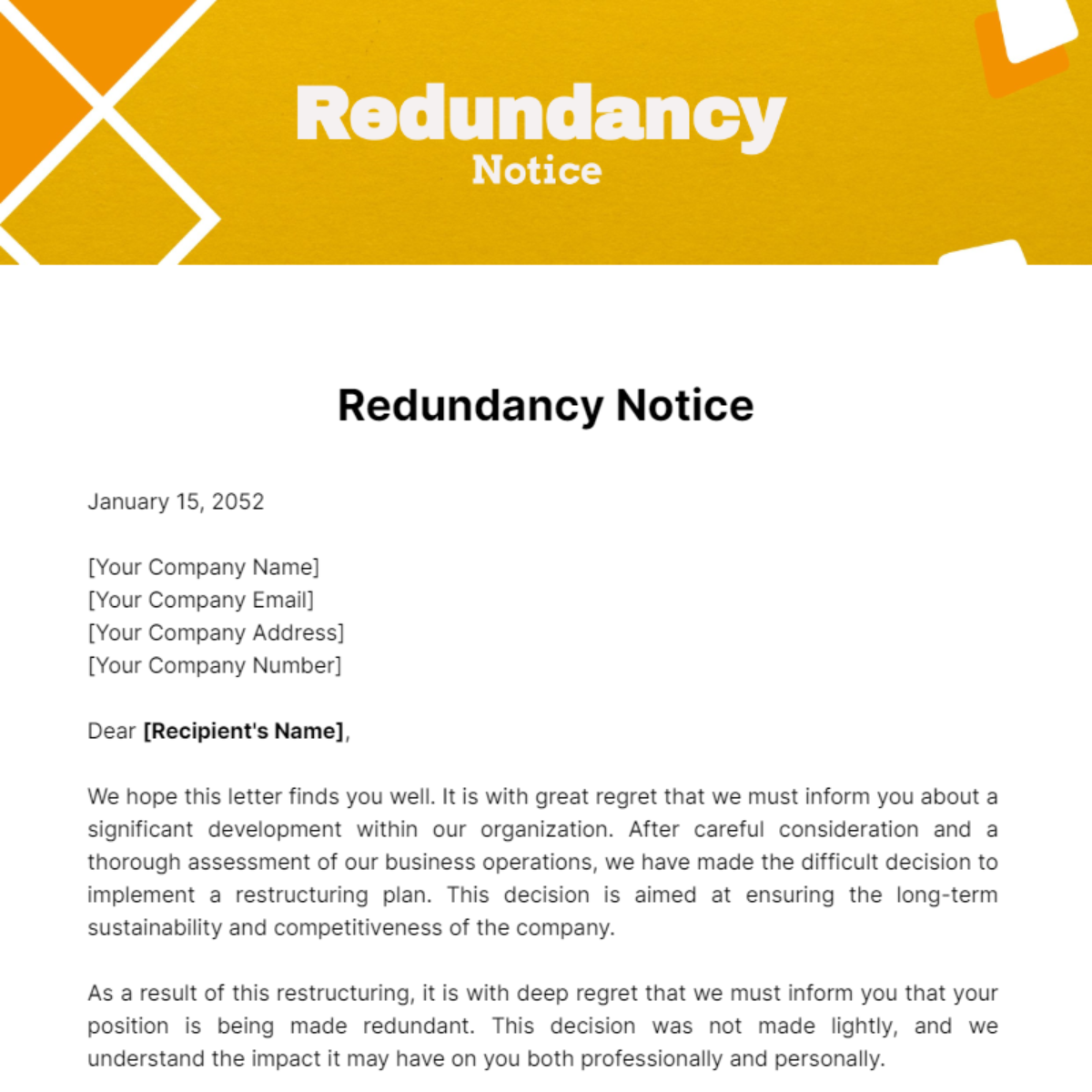Small Business Closing Employee Rights UK: Making Sure Fair Redundancy Pay
Small Business Closing Employee Rights UK: Making Sure Fair Redundancy Pay
Blog Article
Checking Out the Operational Characteristics of Business Redundancy and Its Long-Term Sustainability

Redundancy Methods for Organization Connection
In order to make certain nonstop procedures, services should execute efficient redundancy strategies for company continuity. Redundancy in this context refers to the duplication of essential elements or features within a system to alleviate the effect of potential failures. By incorporating redundancy strategies, companies can boost their strength against disturbances caused by numerous factors such as all-natural catastrophes, devices failings, or cyber-attacks.
One common redundancy approach is the application of back-up systems and information storage solutions. This involves producing duplicates of vital data and systems that can be turned on in situation of a key system failure. In addition, organizations can develop repetitive communication networks and power sources to keep connectivity and procedures during unanticipated events.
Moreover, cross-training staff members to do multiple functions within the company can function as an important redundancy strategy. This guarantees that crucial tasks can still be brought out also if crucial workers are unavailable because of illness or other reasons. In general, effective redundancy strategies are vital for services to support operational connection and lessen the effect of prospective disturbances.
Impact of Redundancy on Organizational Strength
Offered the essential role redundancy techniques play in making sure service connection, discovering the impact of redundancy on organizational durability becomes important for understanding the alternative operational characteristics of a business. Redundancy, when strategically implemented, can significantly add to enhancing an organization's durability in the face of unanticipated difficulties.
In addition, redundancy can cultivate development and creative thinking within a company as staff members feel empowered to take calculated dangers, knowing that there is a safety and security net to support them in case of failing. Generally, the influence of redundancy on organizational strength is extensive, forming the long-lasting sustainability and success of a company.
Stabilizing Effectiveness and Versatility in Redundancy
Accomplishing a harmonious equilibrium between operational efficiency and adaptive adaptability is a critical challenge in the strategic deployment of redundancy within organizations. Effective procedures are important for preserving efficiency and cost-effectiveness, making sure that sources are used efficiently. Nonetheless, too much emphasis on effectiveness alone can result in rigidity, making it hard for companies to adjust to unanticipated changes or challenges. On the other hand, adaptability permits organizations to react nimbly to click here to read evolving scenarios, fostering advancement and resilience. Yet, way too much versatility without a strong functional structure can cause inefficiencies and variance.
To stabilize performance and adaptability in redundancy planning, organizations need to very carefully analyze their operational needs, market characteristics, and tactical objectives. Inevitably, discovering the appropriate equilibrium in between effectiveness and flexibility is critical for building a resistant and lasting organization in the face of unpredictability.
Long-Term Sustainability Through Redundancy Preparation
To make sure long-lasting viability and stability, organizations must tactically align their redundancy planning with lasting sustainability objectives, thereby balancing functional performance with adaptive flexibility. Business should view redundancy not as a responsive option to immediate issues however as an aggressive technique for long-term success.

Aggressive Actions for Lasting Company Operations
Exactly how can business proactively improve their operational sustainability for long-lasting success? Implementing aggressive steps is essential for companies intending to make certain sustainable procedures.
Moreover, fostering a culture of continual improvement and knowing within the organization can improve adaptability to altering market problems and consumer demands. Encouraging employee involvement in decision-making processes and offering possibilities for expert development can boost morale, productivity, and general efficiency. Establishing clear goals, checking key performance signs, and frequently assessing development are crucial components of proactive sustainability management.
Collaborating with suppliers, clients, and other stakeholders to advertise lasting methods throughout the supply chain can create a causal sequence of positive influence - redundancy pay if company goes bust. By taking aggressive steps towards operational sustainability, business can build strength, drive advancement, and secure their long-term success in an ever-evolving business landscape
Conclusion

In the world of business management, the critical deployment of business redundancy stands as a crucial yet elaborate method that necessitates a delicate equilibrium between functional performance and lasting viability. By exploring the operational dynamics that underpin firm redundancy and examining its wider ramifications for organizational resilience and versatility, a nuanced understanding of how redundancy methods can form the future trajectory of a firm begins to unravel.Offered the essential function redundancy approaches play in making sure service continuity, checking out the impact of redundancy on organizational strength ends up being important for recognizing the alternative operational characteristics of a business. On the whole, the impact of redundancy on organizational resilience is extensive, shaping the lasting sustainability and success of a business.
In final thought, recognizing the functional dynamics of firm redundancy is crucial for guaranteeing long-lasting sustainability.
Report this page